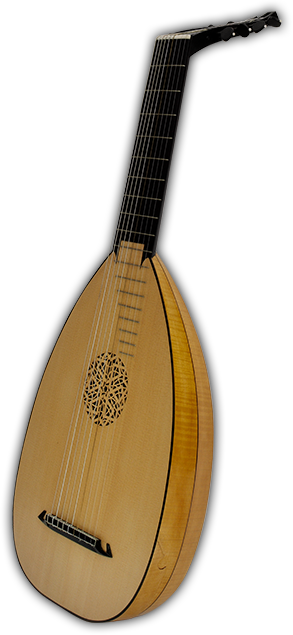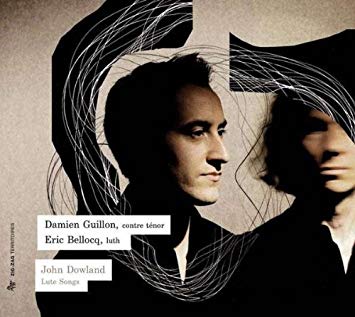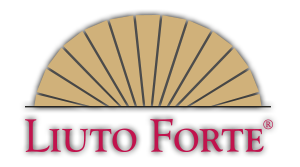Liuto forte in g (Alto Lute)
Repertory: all compositions for 6-10-course alto lute from 1500 to about 1630, vocal accompaniment and consort, music of the 19th to 21st centuries, less suitable for baroque repertory of the 17th and 18th centuries
7-stringed: D (or F) G c f a d‘ g‘
8- stringed: D F G c f a d‘ g‘
9- stringed: D E flat F G c f a d‘ g‘
10-stringed: C D E flat F G c f a d‘ g‘
- String-length 59 cm
- a’ = 415 Hz or 440 Hz
- Single stringing
- Slightly curved fingerboard
- 17 fixed frets (tied-on if desired)
- One rose, broad body, 11 ribs
- Traditional or geared pegs
-
Wood: Rosewood, Maple, Yew
(recommended: Maple or Yew)

Liuti forti are delivered directly from the manufacturer and are not available from music shops.
If you would like to order a Liuto forte or need advice please send us an email.
If you wish, we can also put you in touch with Liuto-forte players in your area.
Using the new soundboard construction of the Liuto forte, we have now succeeded in providing alto lutes, despite their short string length, with a sonorous, viable bass register that effectively contrasts with their clear and brilliant treble, and the traditional repertoire for this instrument is at a new depth.
Guitarists for whom the use of a capo tasto on a larger lute – for example the liuto forte in e (Tenor Lute) – is a rather unattractive option, will be admirably served in the performance of this grand music by the smaller Liuto forte in g. Lutenists will especially appreciate the now fully-fledged bass register which gives more expressiveness to the compositions of Dowland and his contemporaries, and a small alto lute is on an equal footing as an accompanying instrument for the singer even in a large room.
Samples
Please note that when recording with Liuti forti, there is no difference between the sound of the instrument in the recording and the sound of the instrument in the original. If you wish, compare the sound of the respective pieces with recordings of the same piece on copies of historical lutes that can be found on the Internet.
„The Gillyflower” from
„The Margaret Board Lute Book” (c. 1620-35)
Éric Bellocq, Lutenist, France,
Liuto forte in g (415 Hz), Maple
John Dowland „Preludium“
Olivier Bensa, Guitarist, France,
Liuto forte in g (415 Hz), Yew
John Dowland „Come again“
Duo Bensa-Cardinot, France,
Liuto forte in g (415 Hz), Yew

John Dowland „I saw my lady weep“
Éric Bellocq, Lutenist, France, Liuto forte in g, Maple
Damien Guillon, France, Countertenor
by courtesy of Zig-Zag Records
Headphones recommended

John Dowland „Come heavy sleep“
Éric Bellocq, Lutenist, France, Liuto forte in g, Maple
Damien Guillon, France, Countertenor
by courtesy of Zig-Zag Records
Headphones recommended
John Dowland „Now, O now, I needs must part“
Duo Bensa-Cardinot, France,
Liuto forte in g (415 Hz), Yew





